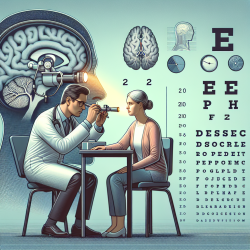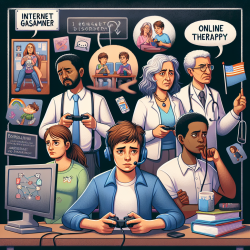Unlocking the Diagnostic Potential of Eye Movements in Neurological Disorders
As practitioners in the field of speech-language pathology, we are constantly seeking innovative ways to enhance our diagnostic capabilities and improve outcomes for our clients. A recent study titled "Oculomotor function in frontotemporal lobar degeneration, related disorders and Alzheimer's disease" offers compelling insights that could revolutionize our approach to diagnosing complex neurological disorders.
The Power of Eye Movements
Eye movements, specifically oculomotor functions, are emerging as sensitive markers for neurological diseases. The study conducted by Garbutt et al. (2008) explores how these markers can differentiate between various disorders such as Frontotemporal Lobar Degeneration (FTLD), Alzheimer's disease, Corticobasal Syndrome (CBS), and Progressive Supranuclear Palsy (PSP).
Key Findings and Their Implications
The research highlights several key findings:
- Saccade Velocity and Gain: PSP patients displayed unique abnormalities in saccade velocity, which were not present in other disorders. This suggests that measuring saccade velocity can be a critical tool in distinguishing PSP from other conditions.
- Anti-Saccade Task Performance: All patient groups except those with Semantic Dementia (SD) showed impairments in the anti-saccade task. However, FTLD subjects were able to self-correct errors similarly to control subjects, unlike those with Alzheimer's, CBS, or PSP.
- Receiver Operating Characteristic (ROC) Analysis: The study found that oculomotor assessments were superior to traditional neuropsychological tests in differentiating PSP from other disorders and were comparable in distinguishing other groups.
Implementing Research Outcomes
For practitioners, these findings suggest a new avenue for enhancing diagnostic accuracy. By incorporating oculomotor assessments into our diagnostic toolkit, we can potentially identify specific neurological disorders more effectively. This approach not only aids in early diagnosis but also in tailoring interventions that are more aligned with the underlying pathology.
Encouraging Further Research
While the study provides a solid foundation, it also opens the door for further research. Investigating the relationship between oculomotor abnormalities and other neurological conditions could expand our understanding and application of these findings. As practitioners, we should advocate for and participate in research that explores these possibilities.
Conclusion
The study by Garbutt et al. underscores the potential of oculomotor function as a diagnostic tool in neurological disorders. By integrating these insights into our practice, we can enhance our diagnostic precision and ultimately improve outcomes for our clients. To read the original research paper, please follow this link: Oculomotor function in frontotemporal lobar degeneration, related disorders and Alzheimer's disease.










